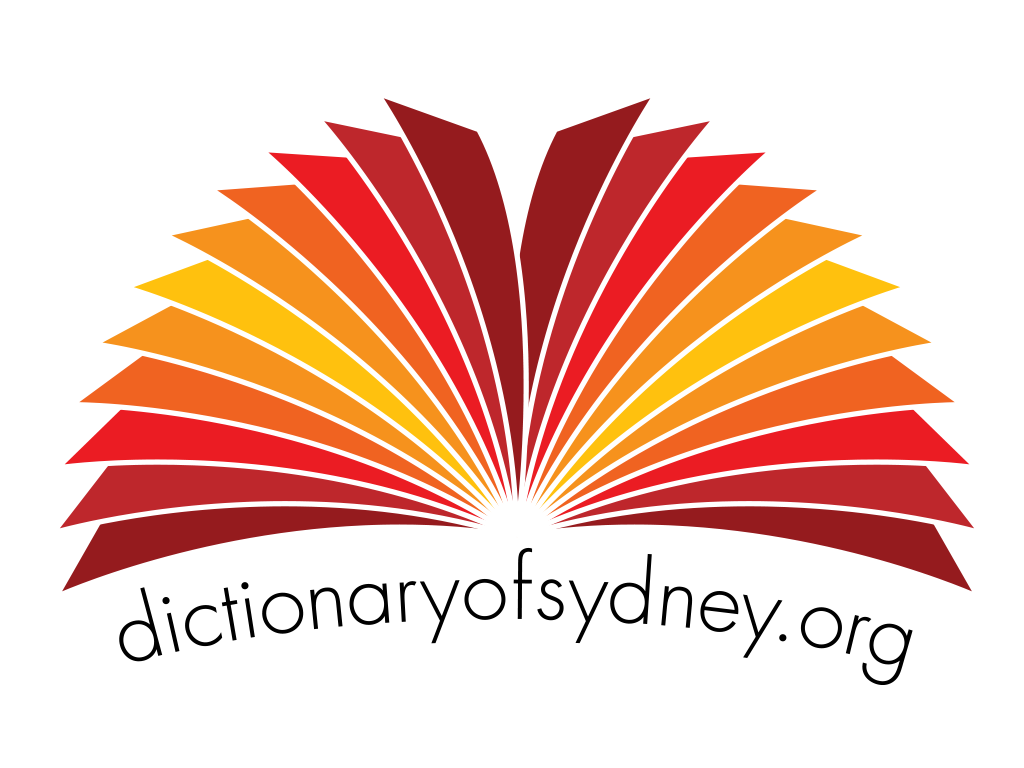The Dictionary of Sydney was archived in 2021.
Eora fisherwomen
 bara by Aboriginal artist Judy Watson, image courtesy of Judy Watson and UAP MEDIA
bara by Aboriginal artist Judy Watson, image courtesy of Judy Watson and UAP MEDIA
Listen to Lisa and Jess on 2SER here
Eora women deserve to be recognised. They were the main food providers for their families; along the coast and harbour one of the staple foods were fish. There is an excellent article in the Dictionary of Sydney by Professor Grace Karskens that traces the history of Barangaroo and the Eora fisherwomen that you can read on the site here. Women fished from their bark canoes (nowie or nawi) with lines and hooks, whereas men stood along the shoreline with their fish gigs. The women made their fishing lines (carr-e-jun) by twisting together two strands of fibre from kurrajong trees, Cabbage trees or flax plants. Sometimes animal fur or grass was also used. Aboriginal woman with her baby, in a canoe fishing with a line c1805, courtesy Mitchell Library, State Library of NSW ( PXB 513, f.12)
Aboriginal woman with her baby, in a canoe fishing with a line c1805, courtesy Mitchell Library, State Library of NSW ( PXB 513, f.12)
 Fish hooks of NSW, detail from plate in John White's Journal of a Voyage to New South Wales, 1790, courtesy Mitchell Library, State Library of NSW (MRB/ Q991/ 2A2)
Fish hooks of NSW, detail from plate in John White's Journal of a Voyage to New South Wales, 1790, courtesy Mitchell Library, State Library of NSW (MRB/ Q991/ 2A2)
 bara or Shell fish-hooks made from 'Turbo turquata' from the Australian Museum, photo by Paul Ovenden
bara or Shell fish-hooks made from 'Turbo turquata' from the Australian Museum, photo by Paul Ovenden
Categories
Blog
2ser
Aboriginal history
bara
Barangaroo
City of Sydney
Eora fisherwomen
Lisa Murray
public art
sydney history
Tess Connery

